2025 – CHW
Ross & Kel both agree that this Pinus insignis (radiata) was the largest tree they have ever had to deal with on the estate over many decades. In this picture Tim stands counting how old the tree was when it fell (2 years ago). The answer is 136 years. My father always said Pinus radiata last 100 years in our climate but this one (and quite a few other gigantic survivors which are still going) did rather better. Just look how quickly it grew in the first 20 years. Growing beside the River Luney obviously helped.
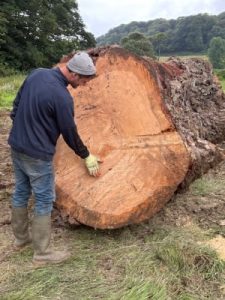
2024 – CHW
An elderly and now nearly dead sycamore. The last 2 summers put paid to the crown and now the basal shoots die off too.
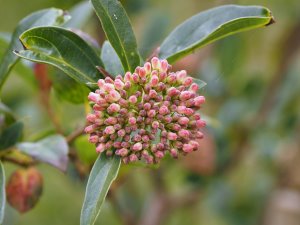
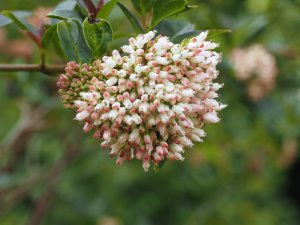
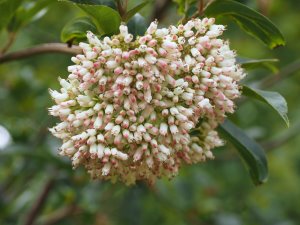
2023 – CHW
Seed pods turning pink on Cercis canadensis ‘Flame’. Asia should collect before too long when they fully ripen.
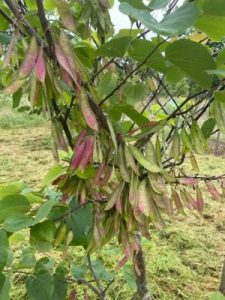
2021 – CHW
Lonicera crassifolia growing away happily on an old tree stump at the Four in Hand.
A very fine self-sown buddleia above The Fish Sheds in West Portholland.
2019 – CHW
The standard, variety and overall excellence of the vast exhibitors’ marquee at Hampton Court is amazing. Far less hassle, pomposity and bossiness than at Chelsea and exhibitors are here to make money selling real plants rather than (as at Chelsea) to act as unpaid garden advisers for the visitors.
The Burncoose stand has many rare plants on it. A few are pictured here.
Rhus typhina ‘Tiger Eyes’
Eucryphia lucida ‘Pink Clouds’ has had the odd flower out for months but it is now putting on a proper show in several different places in the garden. The first eucryphia to perform and we now look forward to the others brightening up what is now a sun scorched summer. Another week of this heat with no rain and there will be serious casualties amongst the new plantings and with the big leafed rhododendrons.
[Roy replied 26-7-2018: On the basis that it is one of my collections from China and knowing the species I have distributed I believe it to be R. filipes which I collected under my number L. 859 from Luding-Kangding roadside Sichuan 12-9-81. Part of the delay was caused by my sending the image to Michael Marriot at David Austin’s who eventually replied in agreeance. There is a large plant of this collection growing into a large hawthorn in my neighbour’s garden given to her many years ago. It flowered prodigiously this summer with flowers around 2.5-3cm across. They are replaced by pea-sized hips in large quantities.]
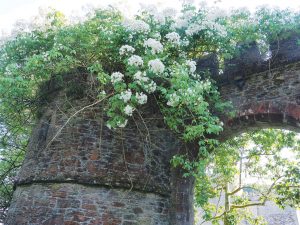
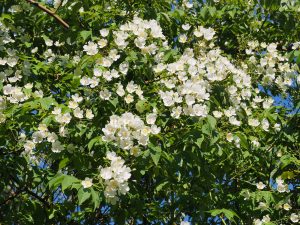
A dry day after a week’s rain on and off. No harm in that!Acer cappadocium ‘Aureum’ has very fine new growth indeed as a young plant in Kennel Close.
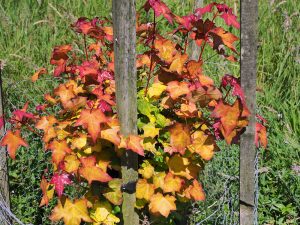
A nice batch of Deutzia compacta which came as cuttings from Peter Moore whom I suspect collected this species on a Chinese trip. Pale lilac flowers fading to white in tight clusters. Asia has raised this as a new item for the 2017 catalogue. Propagate more – it is nice!
2015 – CHW
The large clump of Cordyline australis outside the front door is just going over. Dracaena Avenue in Falmouth is looking a bit bare now as older cordylines have been getting some nasty disease in Cornish gardens. No doubt yet another supposedly undiscovered phythopthera which will excite Defra.
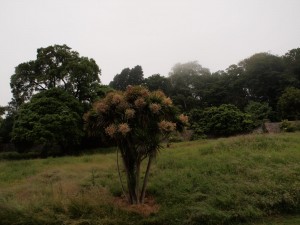
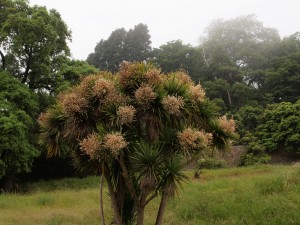
The clump had, until last summer, an ilex oak growing around it. Now this has gone the taller trunks have shoots emerging lower down their stems.
So now travelling to the Isle of Wight with plenty of catalogue proofing and magazine articles to research and write up. The perfect ‘holiday’!
On the way I ponder the puzzle of Stewartia rostrata. An article in The Plantsman dated June 2008 shows pictures of the bark and flower of Stewartia rostrata.The 25 year old plant at Caerhays has similar bark, its seedpods have four capsules (as they should) but its flowers here are very different to those described by the three experts in the article.
None of the Caerhays plants nor those we have sold at Burncoose and flowered in the nursery for many years have small white flowers as shown in the article. Instead they are blotched pink in bud opening with pink blotches. The best and largest flowers of any of the stewartias in my opinion but no mention of this in the article.
Secondly the Caerhays plant has intense scarlet then almost black autumn colour. Rather better than described in Hillier’s who say autumn colour only in the most suitable growing conditions. Cornwall is hardly noted for its autumn colour or cold winters.
I have written to Koen Camelbeke, one of the authors, to ask his opinion and especially why our plants flower in late June and July and not in May as he suggests.
The puzzle does not stop there either.The plant here which we have always thought was Stewartia pseudocamellia appears to be Stewartia monodelpha in line with the appearance of its flaking bark. Our Stewartia sinensis does not have bark like the plant pictured and, at least in part, its bark is more like Stewartia monodelpha. Perhaps our elderly Stewartia pseudocamellia only has greenish bark with white and yellow peeled patches at certain times of the year or not as it ages?More research is needed but I am certain that the 25 to 30 year old Stewartia pseudocamellia at Burncoose at Burncoose by the mist houses has ruffled edges to its petals as it should. I now need to check its bark.
My tentative conclusion is that The Plantsman’s attempt to be definitive as to the pictures and descriptions of the key species may well not be as clear cut as the authors would like to believe.
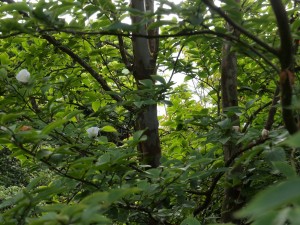
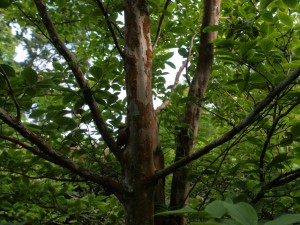
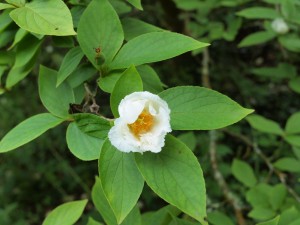
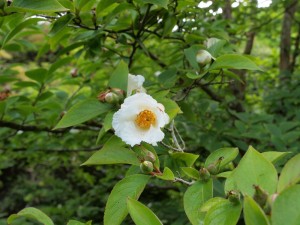
1996 – FJW
Philip and I found a good flower on Camellia ‘Joan Trehane’.
1995 – FJW
We have had 5 very hot days and need rain.
1976 – FJW
Very dry – cut 2 fields of corn June 29th, baled them June 30th. First thunder today. Sinogrande under threat from the drought. (It was a drought).
1959 – FJW
Main hay crop gathered in. Moser’s Maroon flowering. A good Eriogynum hyb on the Hovel Cart Road.
1933 – JCW
Just back from North, am just going to see the [?] Fuschias as good this year.1932
Just as in 1927 apparently in every detail.
1927 – JCW
Came from Scotland, they have had good rain here, Griersonianum, Maddeni, Styrax wilsonii all very good. Many Magnolia parviflora open now. Azalea arborescens is well out for 4 small plants.
1925 – JCW
Came from Scotland, no rain for three weeks, dry but a real gain from the warmth and most things look well. Benthamias V.G, Rho griersonianum fine yet Rose brunonis and American Pillar excellent. The late Maddeni hybrids excellent. Dichroanthum several and so Maddeni. The two flowers of Eriogynum very good. Some Mag parviflora and hypoleuca, also delavayi.
1924 – JCW
The pink Moyesi, Styrax hemsleyanus, Discolor, and some Harrow hybrids are the best things open now.
1910 – JCW
Have been in Scotland for five weeks. R brunonis, Dracoena flowers and the Mitrarea are the best things open now. Some bulbs moved, nearly all the seed picked, our best year for this last.
1898 – JCW
Came from London after 3 weeks absence. Many Henonis [bamboo] only half grown, Nigra the same, waterlilies well on, no Nitida moving yet. Some of the tree ferns have only lately started, the best are at full length. Some Mitis [bamboo] well on, but these have held through the winter, 98 canes just starting.




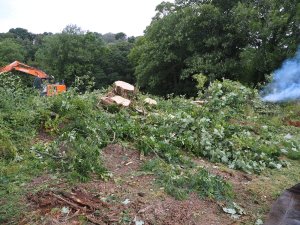

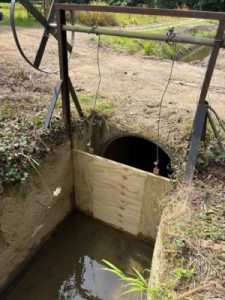

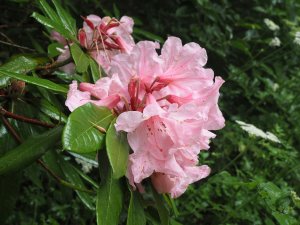
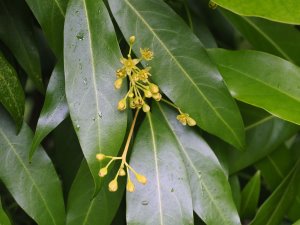
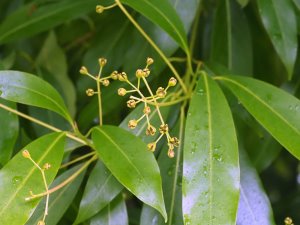
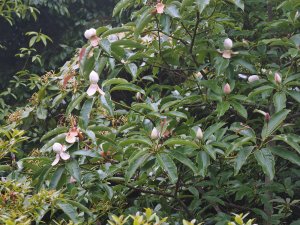
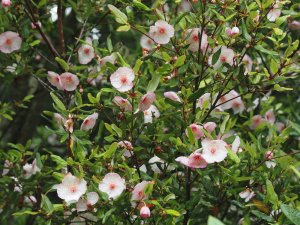
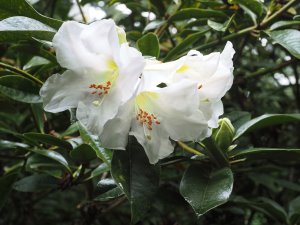
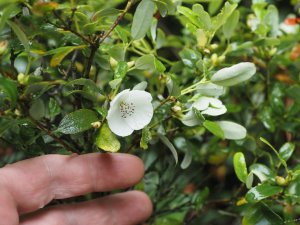
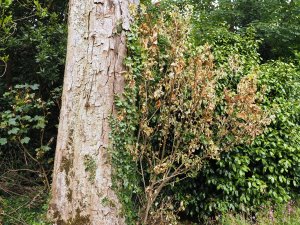
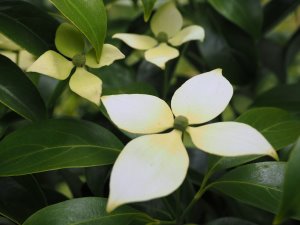
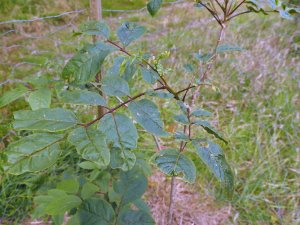
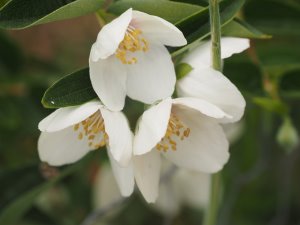
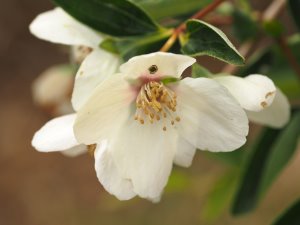
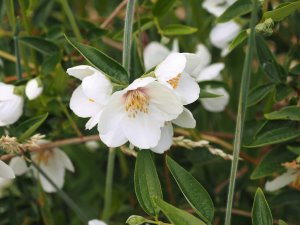
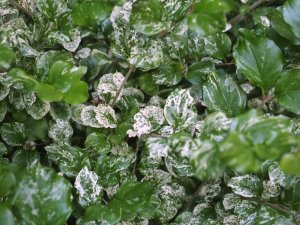
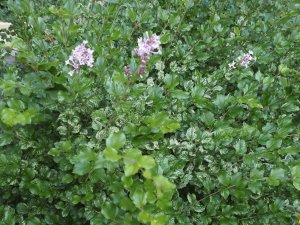
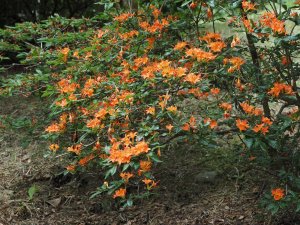
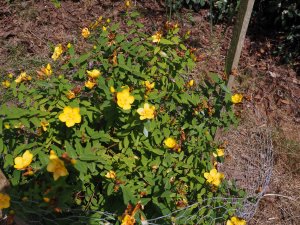
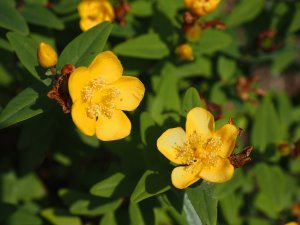
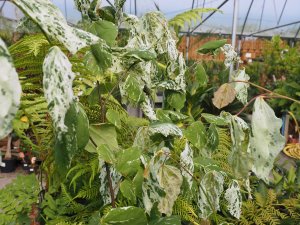
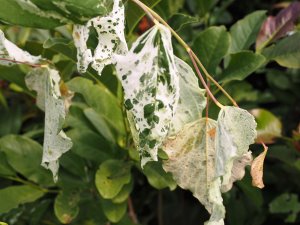
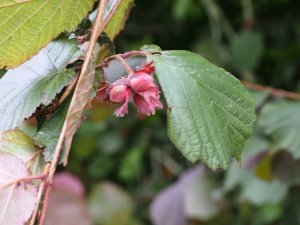
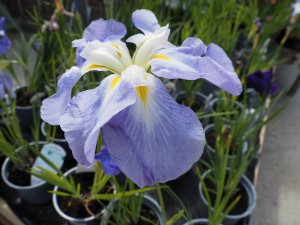
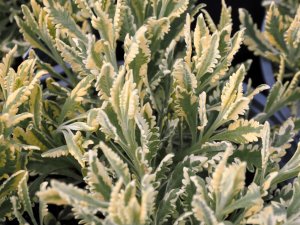
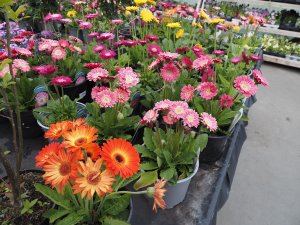
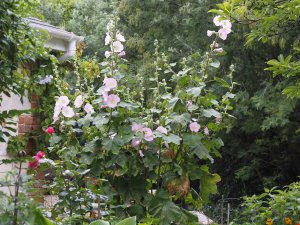
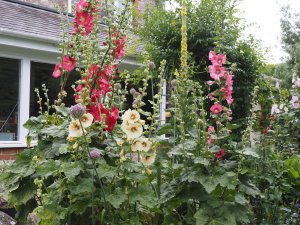
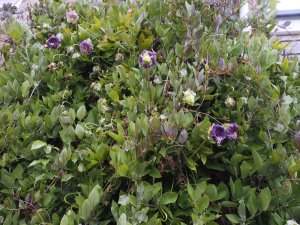
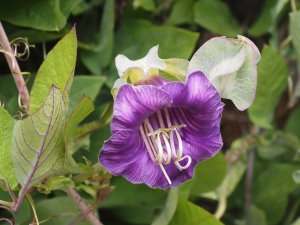
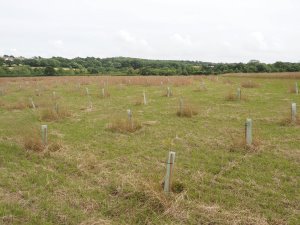
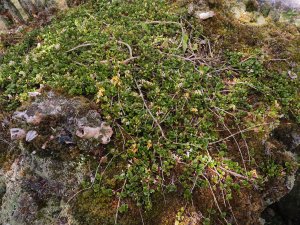
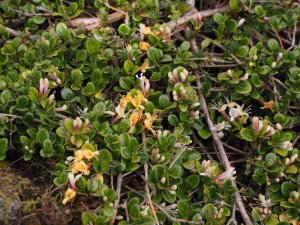




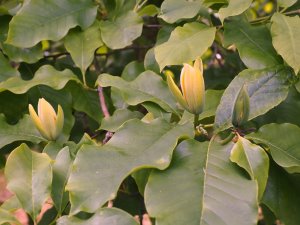
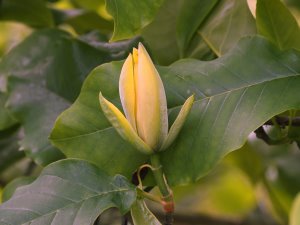
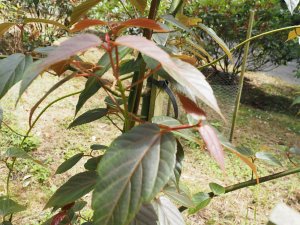
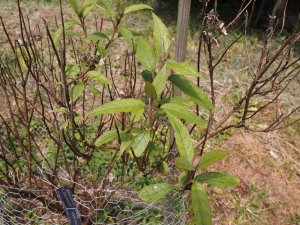
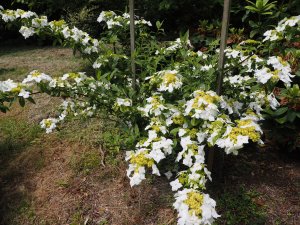
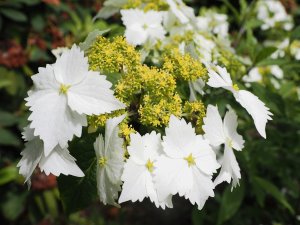
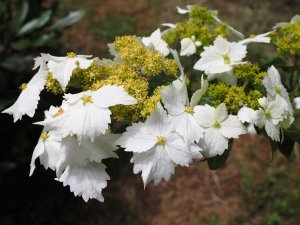
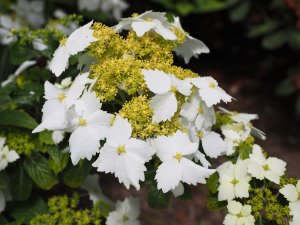
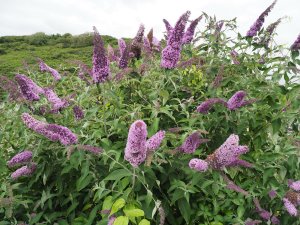
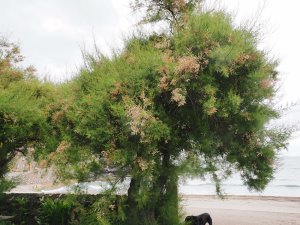
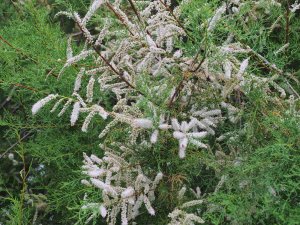
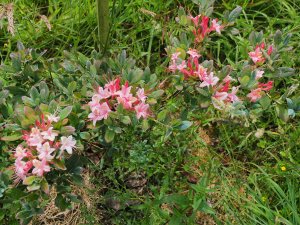
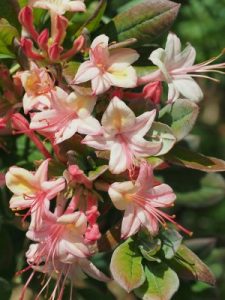
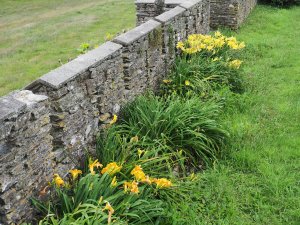
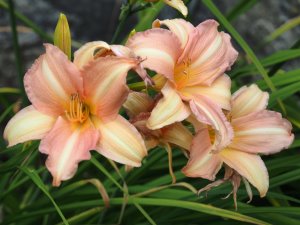
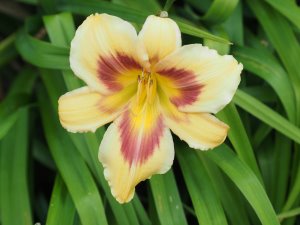
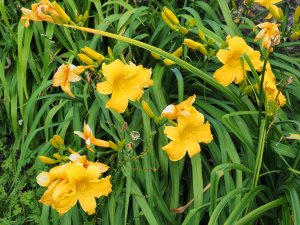
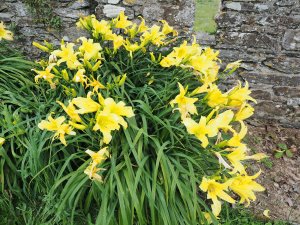
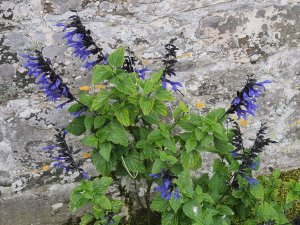
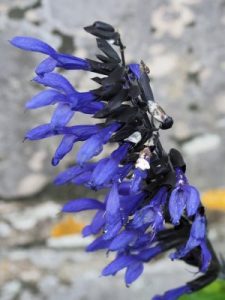
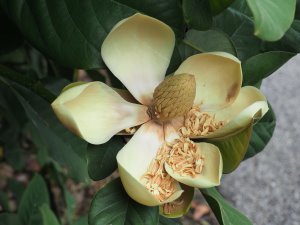
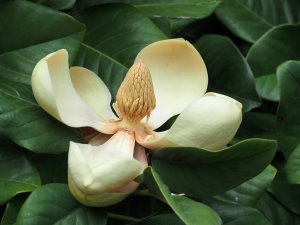
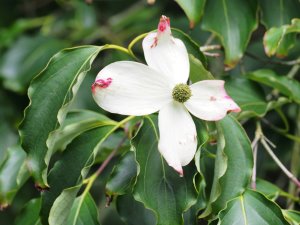
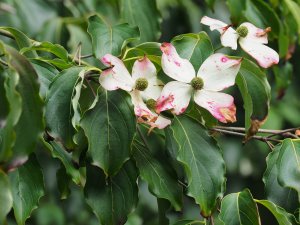
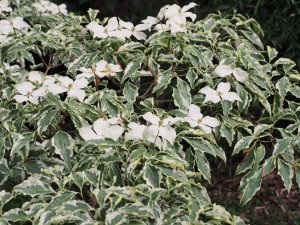
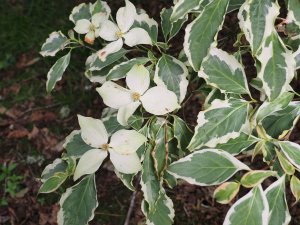
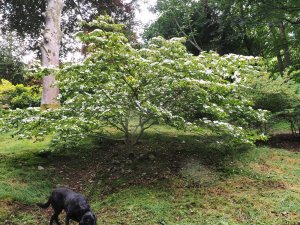
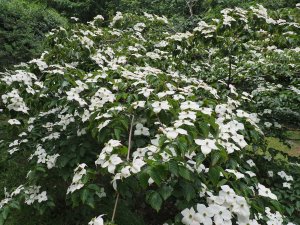
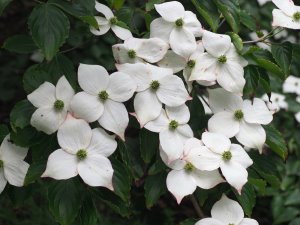
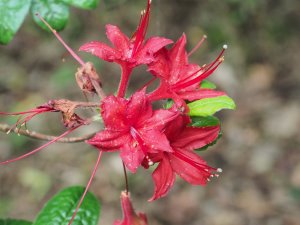
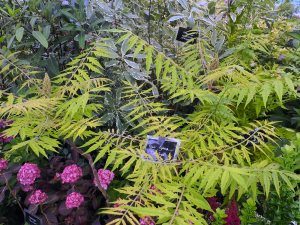
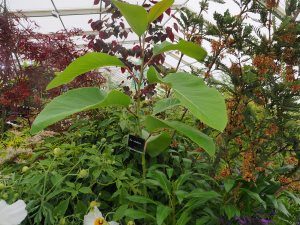
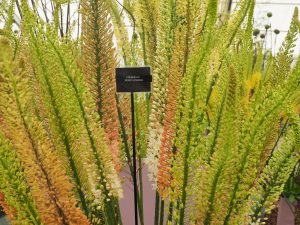

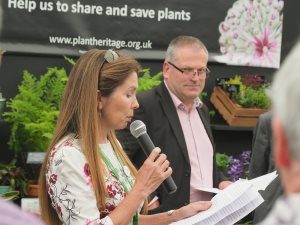
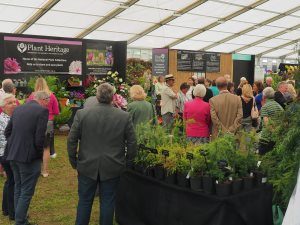
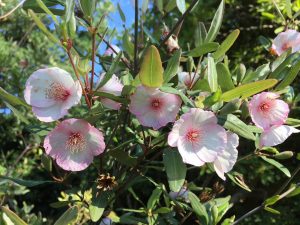
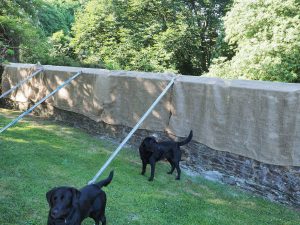
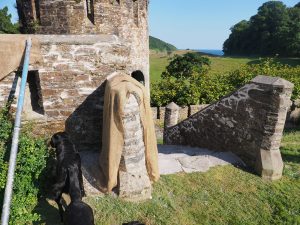
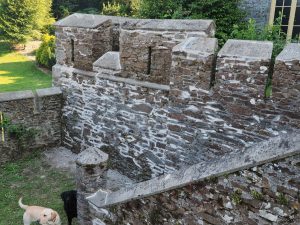
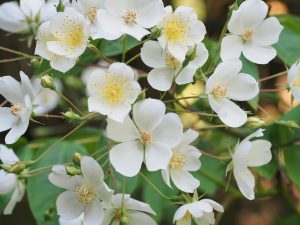
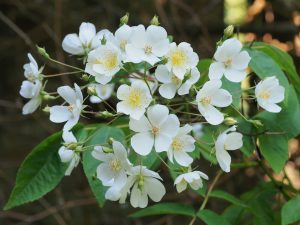
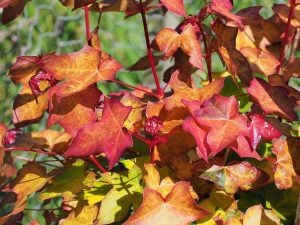
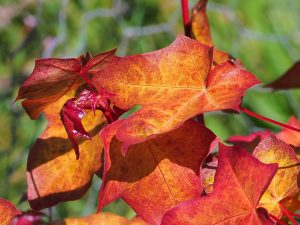
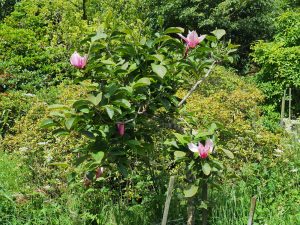
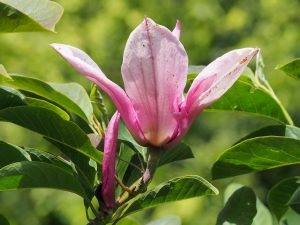
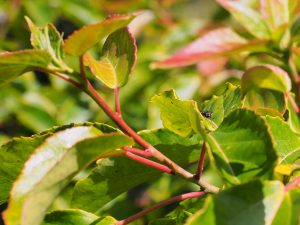
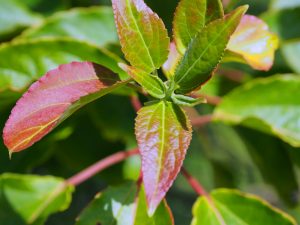
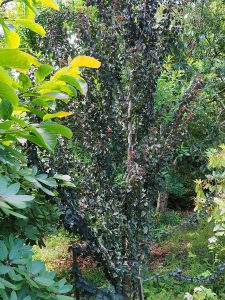
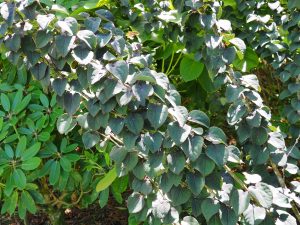
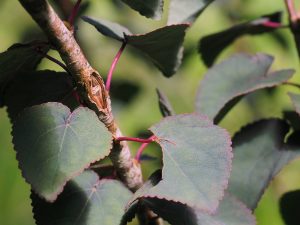
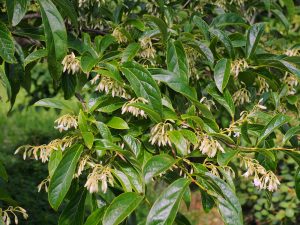
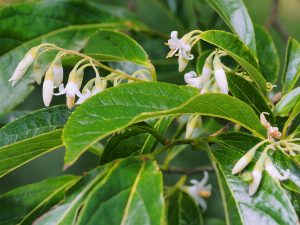
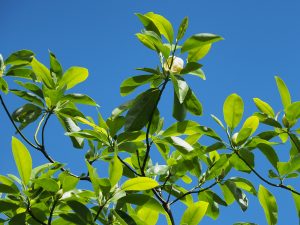
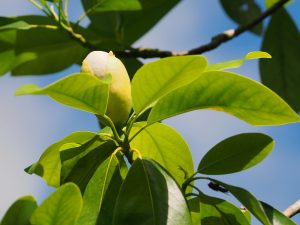
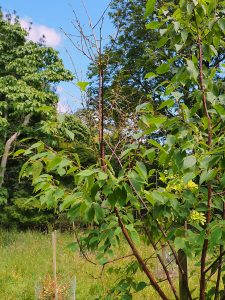
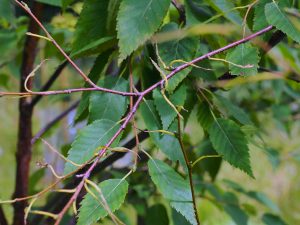
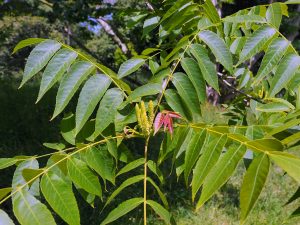
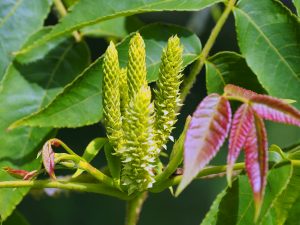

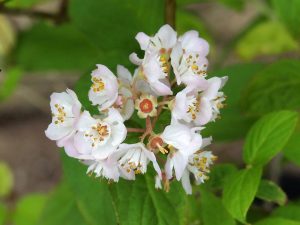
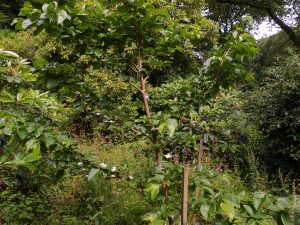
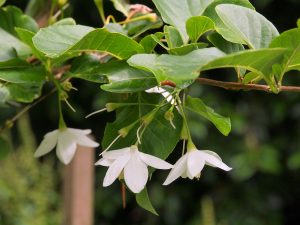
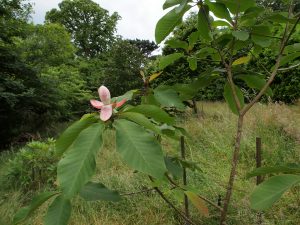
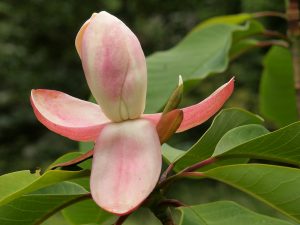
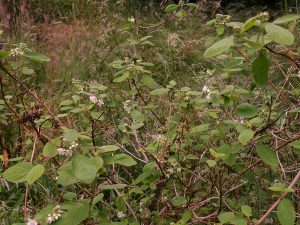
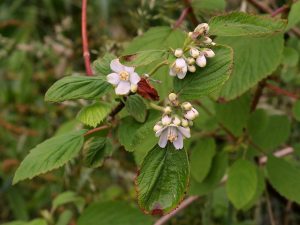
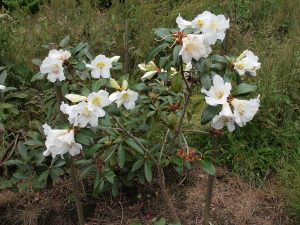
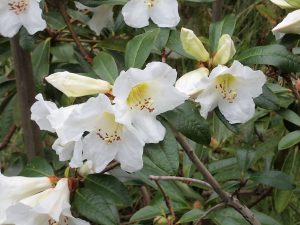
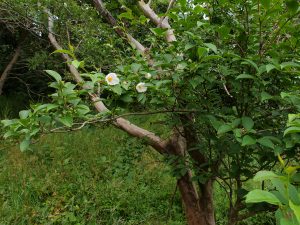
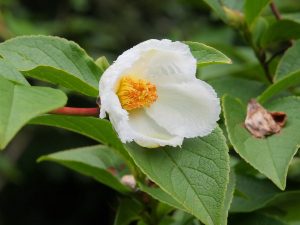
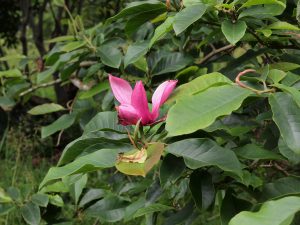
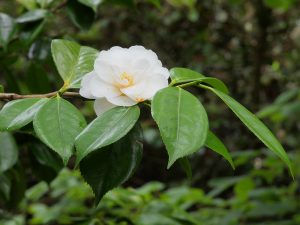
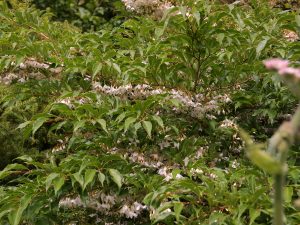
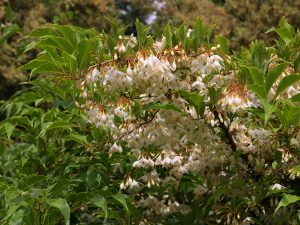
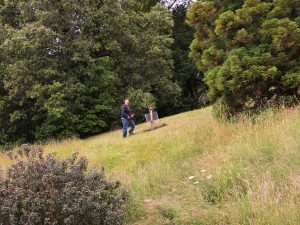
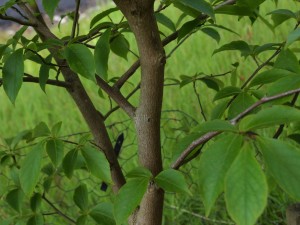
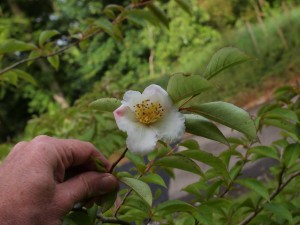
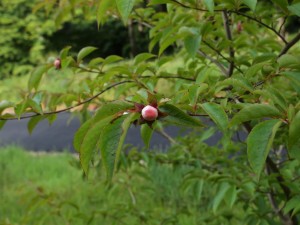
Email from Koen Camelbeke 14.07.15 in reply to my query:
[…] I’ve checked the photos on the 1 July page and they all seem correct. S. rostrata can indeed have this nice pink blush on the outer side of the unopened petals. Quite beautiful and attractive. The flower in the Plantsman article is showing the inner side and is completely open. The picture is by Philippe de Spoelberch and I would be very surprised if it would be wrong as rostrata is easy to recognize as a species esp. when flowers and fruits are present.
Can you also share following link with Charles:
http://www.arboretumwespelaar.be/userfiles/file/pdf/111016_Keys%20to%20the%20deciduous%20species%20of%20the%20genus%20Stewartia%20following%20Dr%20Spongberg_PdS.pdf
It is the key to the species with a lot of illustrations. This may also be useful for further studies. […]